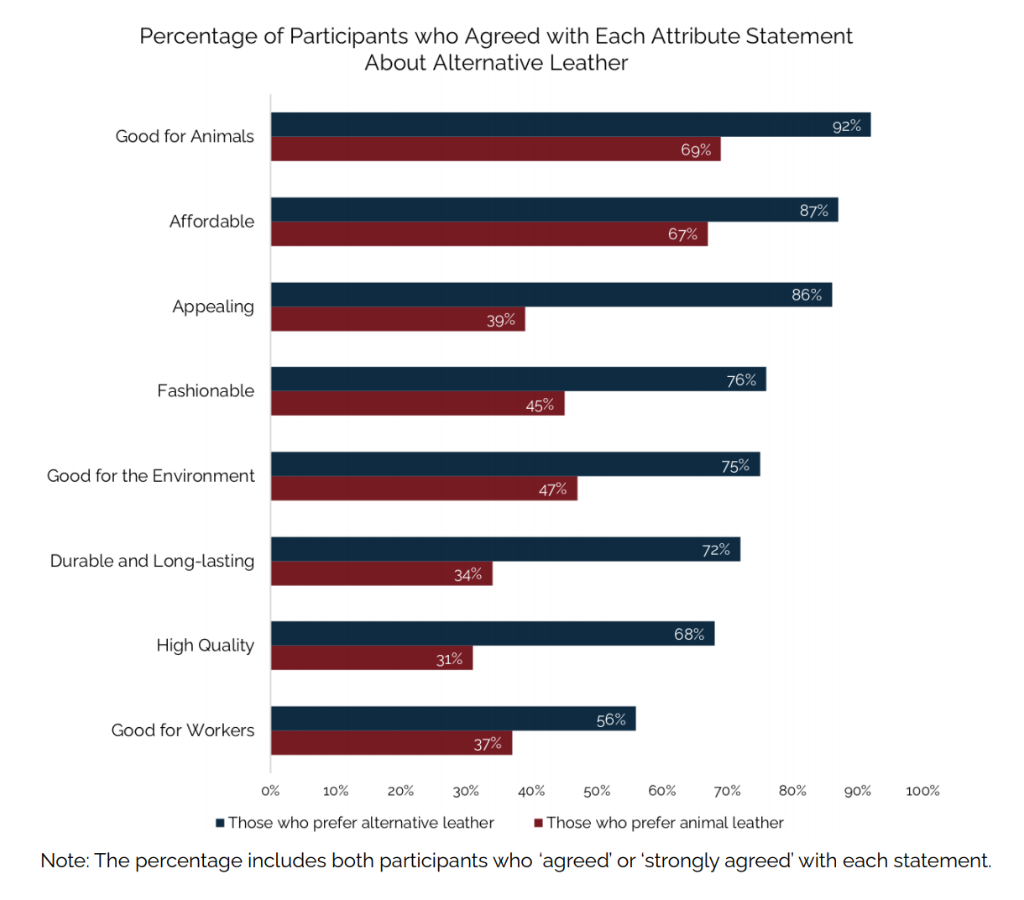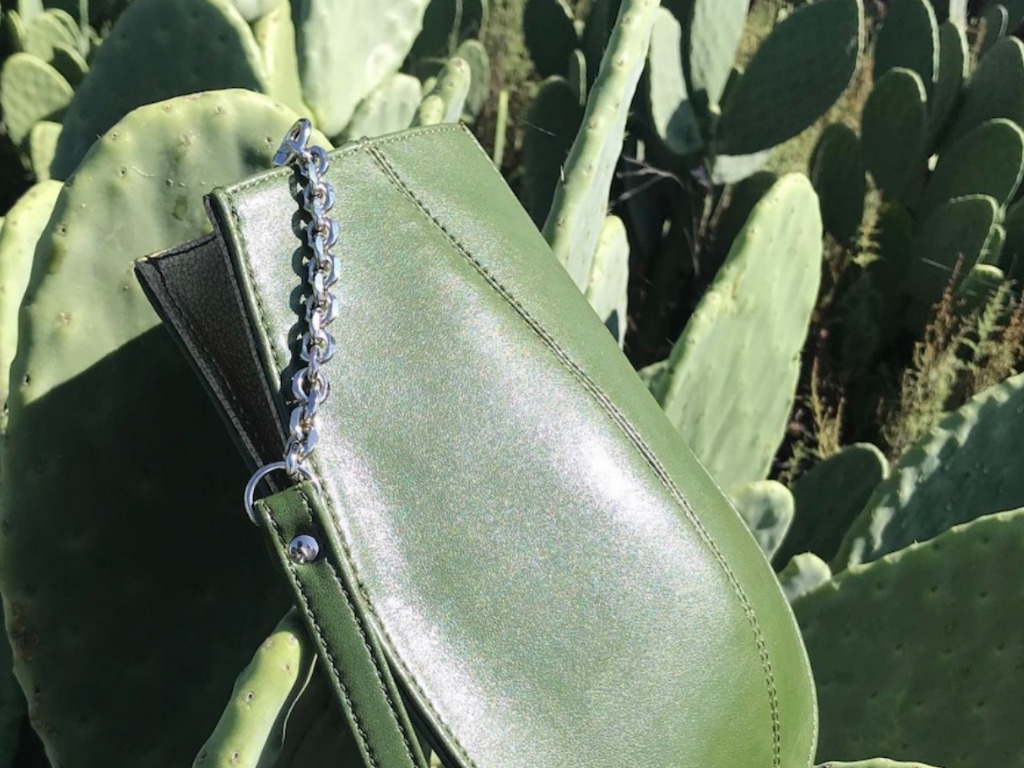Over Half Of U.S. Consumers Prefer Cruelty-Free Leather Alternatives Over Animal Leather, Study Finds
4 Mins Read
The Material Innovation Initiative (MII), a non-profit dedicated to promoting the creation of animal-free materials for various industries, collaborated with the North Mountain Consulting Group on a study about U.S. consumer perception around cruelty-free leather. Findings show that 55% of those surveyed preferred leather alternatives over animal leather and in this category, 73% said that they would not mind trying a lab-grown cell-based alternative.
Titled ‘Alternatives to leather: An exploratory study of U.S. consumer perceptions’, the research’s findings show that although several consumers like the performance and aesthetics of animal leather, a huge majority would still choose animal-free leather owing to environmental, ethical, and animal welfare reasons.
Other participants in this group shared that they would refrain from buying animal leather as it disgusted them and made them uneasy.
The study further scoped the effectiveness of messaging when it comes to buying leather alternatives and whether they would spend more for these products.
Consumers that preferred animal-free leather as well those that didn’t, had animal welfare as the common reason and most effective messaging to purchase leather alternatives.
In a press release seen by Green Queen, co-founder and CEO of MII, Nicole Rawling, said that consumers are inclined to buy those products that match with their values.”They are becoming increasingly aware that animal leather does not fit with their values. Leather production contributes to greenhouse gas emissions, harmful chemical pollution, and negative health impacts for workers and surrounding communities.”

Consumers are becoming increasingly aware that animal leather does not fit with their values. Leather production contributes to greenhouse gas emissions, harmful chemical pollution, and negative health impacts for workers and surrounding communities
Nicole Rawling, co-founder and CEO of MII
Respondents shared their reasons with some saying that it is definitely safer for animals and the alternative doesn’t seem that bad. “Not that I’m an extremely big advocate for animals, but if the alternative functions the same, I do not see the reason not to go with it.” Others shared that the leather alternatives are equally good and way cheaper. “Also, it grosses me out a little that leather is animal skin.”
In terms of purchasing decisions, 69% said that they don’t mind paying more for the alternatives, and 30% expressed that they would pay up to 25% more. In this group, 96% were open to buy plant-based leather with 67% enthusiastic to try them out. In terms of cell-based leather that is grown in labs, 73% were open to trying them out with 34% curious about the same.
Rawling added: “On top of this, leather production relies on the skins of approximately 1.4 billion animals every year, a fact that many consumers find unsettling. But animal leather still provides unique value in terms of performance and aesthetics. Creating next-gen leather alternatives that outperform leather both functionally and ethically could lead to a total transformation of the leather market away from animal options.”
Consumers who chose animal leather felt that the quality, durability, look, and conferred status were behind their purchasing reasons with respondents sharing that choosing this leather is like “choosing to buy diamonds over crystals.”
Others stated that they would avoid animal-free ones as they weren’t confident about the quality of these materials with respondents saying “too many times I have had fake leather or leather alternatives deteriorate on me.”
Despite these responses, 80% were open to trying out cell-based leather grown in factories and 71% would also explore leather alternatives created from acrylic or polyester.
These findings aim to help scientists, companies, and brands understand the concerns regarding leather alternatives and work to address them by developing innovative high-performance materials.
Vegan leather is increasingly becoming a consumer favourite with a report, finding that the sector is set to grow to US$89 billion by 2025, with majority of the growth to take place in the Asia-Pacific region.
Check out this comprehensive list of vegan leather alternatives that are available in the market created from cactus to grape wine to apple skin.
If you’re interested in checking out cactus leather alternatives, read this list which highlights several companies who are out there utilizing this material in various products.
Read the full MII study and methodology here.
Lead image – cactus-based leather, courtesy of Desserto.




